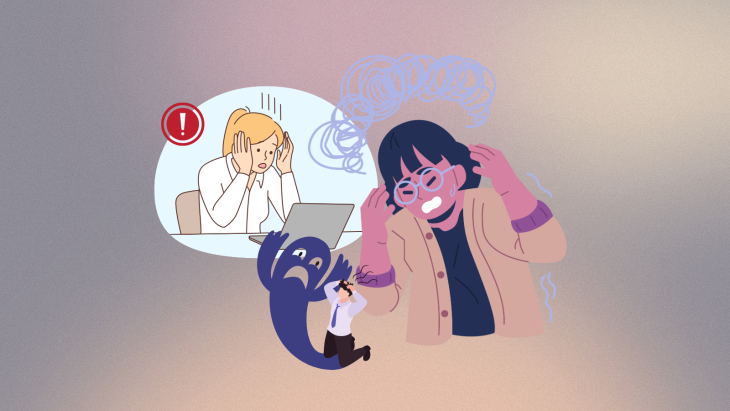Recent Posts
Most Popular
Top mistakes to avoid when supporting a loved one with panic attacks

For the next several minutes, your loved one feels like their world is ending. They can’t breathe properly, and it feels like they are being strangled. They start to palpitate, sweat, tremble but with no apparent reason. You witness them having a panic attack.
What do you do?
Recognizing the situation and having planned with your loved one beforehand what to do in case of a panic attack will surely reduce the distress this situation brings.
What is a panic attack?
Symptoms of a panic attack may look like presenting signs of a heart attack. There is:
- Chest pain,
- Difficulty breathing,
- Shaking,
- Sweating,
- Nausea,
- Faster heartbeat.
These are typical symptoms of anxiety too, but the symptoms are intense, they last for 5 to 20 minutes, and they often start suddenly.
A panic attack that happens multiple times without apparent trigger may be a sign of a broader anxiety disorder called panic disorder. Panic attacks are pretty common, affecting about 11% of the US population per year.
Although the exact cause of why some people develop panic attacks or panic disorders is not known, it is thought that there may be problems in the function of specific brain parts (amygdala) and chemicals in the brain (gamma-aminobutyric acid, cortisol and serotonin).
Family history, other mental health conditions and even negative childhood experiences may increase the risk for developing panic attacks or panic disorder.
How do you support someone who has a panic attack?
1. Stay with the person and stay calm.
It may be frightening or overwhelming, but remember that you being calm has a calming effect on the person having a panic attack. Be a model of calm. For 20 to 30 minutes, remain with your loved one. Your presence will be a source of essential support.
2. Rather than judge, be supportive and encouraging. Aside from your presence, your words of support and encouragement bring power in the situation. Since a person with a panic attack might not be able to think clearly, you can talk to them using short and simple sentences and instructions. You can talk to them to move them to a safer place if necessary.
Words like these can have a calming effect:
- “I am here. I’ll support you.”
- “You can overcome this.”
- “Stay with me. I know you are scared, but you are safe. “
- “You are breathing much better now. Good job.”
- “What do you need? I am here to help.”
3. Demonstrate breathing techniques and guide the person to follow you. You can instruct them to slowly count from 1 to 10 or ask them to repeat after you when you count. Another breathing technique is the 4-7-8 method that makes you breathe in for 4 seconds, hold your breath for 7 seconds and exhale for 8 seconds.
Long-term help for a loved one experiencing panic attacks
Aside from the interventions you can do while a panic attack is happening, you can also help a loved one long-term.
If a loved one’s panic attacks recur frequently and they are having problems living their daily lives because of it, you can offer to assist them in getting professional help. Maybe you can help make an appointment with a doctor.
An assessment and a session with a mental health professional may also be very helpful. (4) With proper treatment, your loved one will be able to learn techniques to deal with their panic attacks much better. (2)
Use your empathy and care for your loved one to assist them both in their short-term and long-term mental health journey.
Discover how a job board can help you browse hundreds of healthcare jobs across the US and find the opportunity that suits you best!








Comments